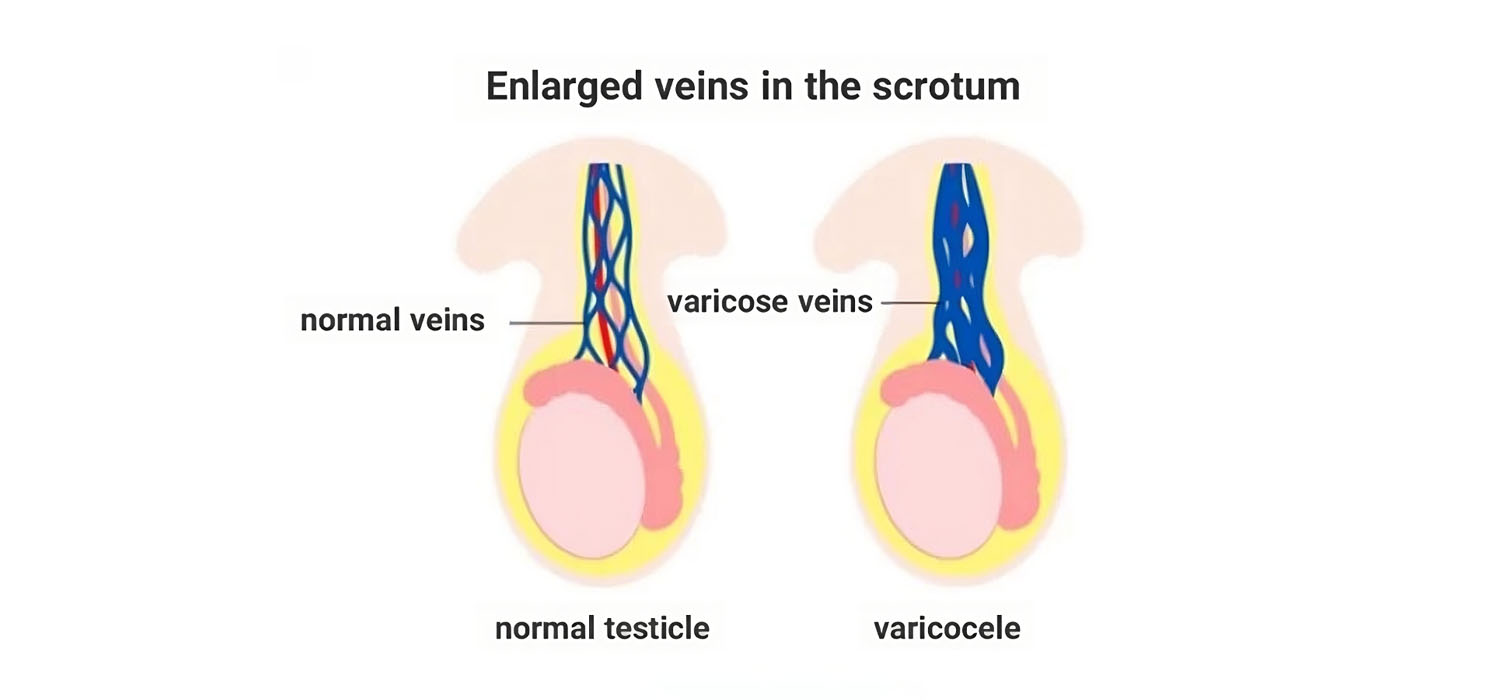Varicocele and infertility
What is varicocele?
Varicoceles are enlarged veins inside the scrotum. There is enlargement and elongation of the veins of the pampiniform plexus within the spermatic cord of the scrotum. It is one of the most common causes of male infertility.
How common is varicocele in men?
Its incidence range between 4 to 23% in general population. However, almost 40% of men who present with infertility have varicocele. Left sided varicoceles are more common than the right ones. Bilateral varicoceles are present in 10% of patients and isolated right sided varicocele is <1%.
What causes varicocele?
The exact cause of varicocele is not fully explained, however multiple factors have been postulated for the origin of varicocele, a few are explained here.
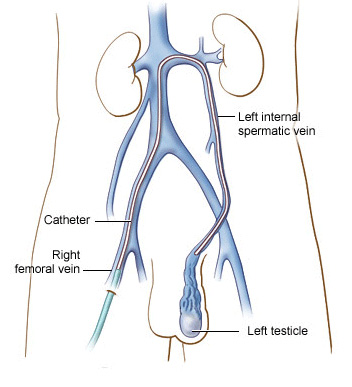
- One of the factors’ causing varicocele is hydrostatic pressure. Due to anatomical structure of the veins in the scrotum, there is a higher hydrostatic pressure in left spermatic vein in comparison to the right side, which predisposes the left side to varicocele formation.
- Another factor is incompetent or absent valves in the scrotal veins which predisposes to varicose formation. Absent valves have been seen more in left sided spermatic veins than the right spermatic veins.
- Lastly, the left renal vein entrapment syndrome or otherwise called the nutcracker effect may also result in formation of varicocele. There is increase in the pressure in the left renal vein due to compression by abdominal aorta and the superior mesenteric artery/ common iliac artery. This increase in pressure in renal vein is transferred to the left internal iliac spermatic vein and pampiniform plexus.
How Varicocele affects male fertility?
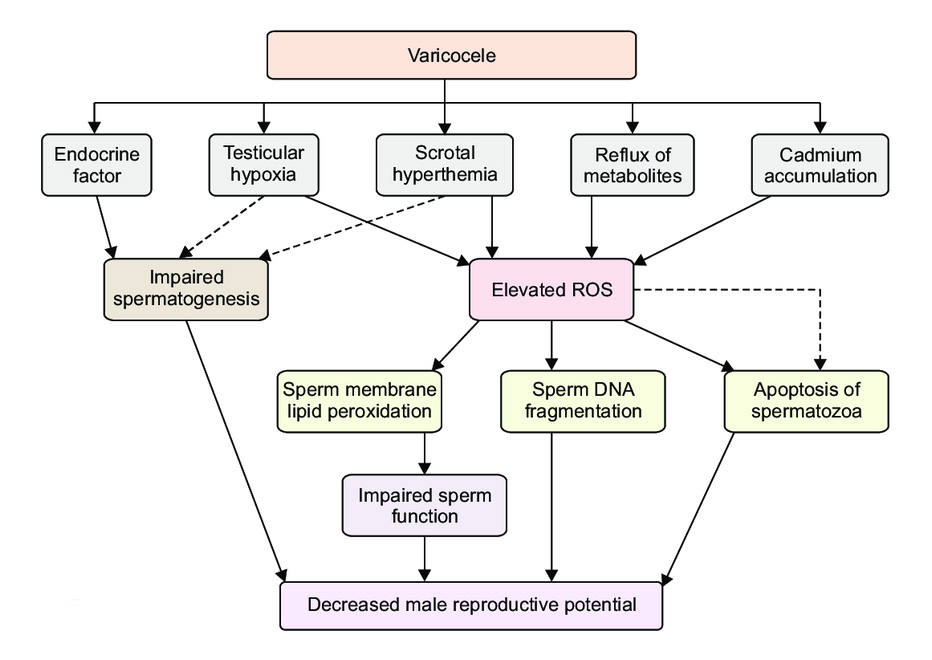
There are various mechanisms by which varicocele causes infertility.
- Scrotal hyperthermia: spermatogenesis is temperature sensitive and ideal temperature range is between 35-36ºC. A slight change in this temperature range can affect spermatogenesis. Varicocele increases the scrotal temperature by 2.6 ºC. Due to the heat stress, there can be decreased production of androgen, proteins and key enzymes needed for spermatogenesis. The heat stress increases the rate of ROS production and death of germ cells.
- Impaired blood flow: decreased blood flow in varicocele causes localized testicular hypoxia (low oxygen content). Testicular hypoxia leads to abnormality in the production of numerous factors and proteins which in turns speeds up the apoptotic process in the testicular tissue.
- Oxidative stress: Reactive oxygen species (ROS) are vital for best sperm function. However, higher amount of ROS is associated with infertility. In patients with varicocele, there is retrograde flow of blood into the pampiniform plexus, which induces increased ROS generation by spermatozoa and leukocytes. Increased ROS can worsen sperm DNA damage, lipid peroxidation and affect the apoptotic function.
- DNA damage and apoptosis: Sperm DNA damage can affect fertilization, embryonic development and can also affect offspring health. Increased ROS production in varicocele can also increase DNA damage. Similarly, in men with varicocele, there is higher apoptosis rate in the developing germ cells, testicular tissues and ejaculated spermatozoa than men without varicocele.
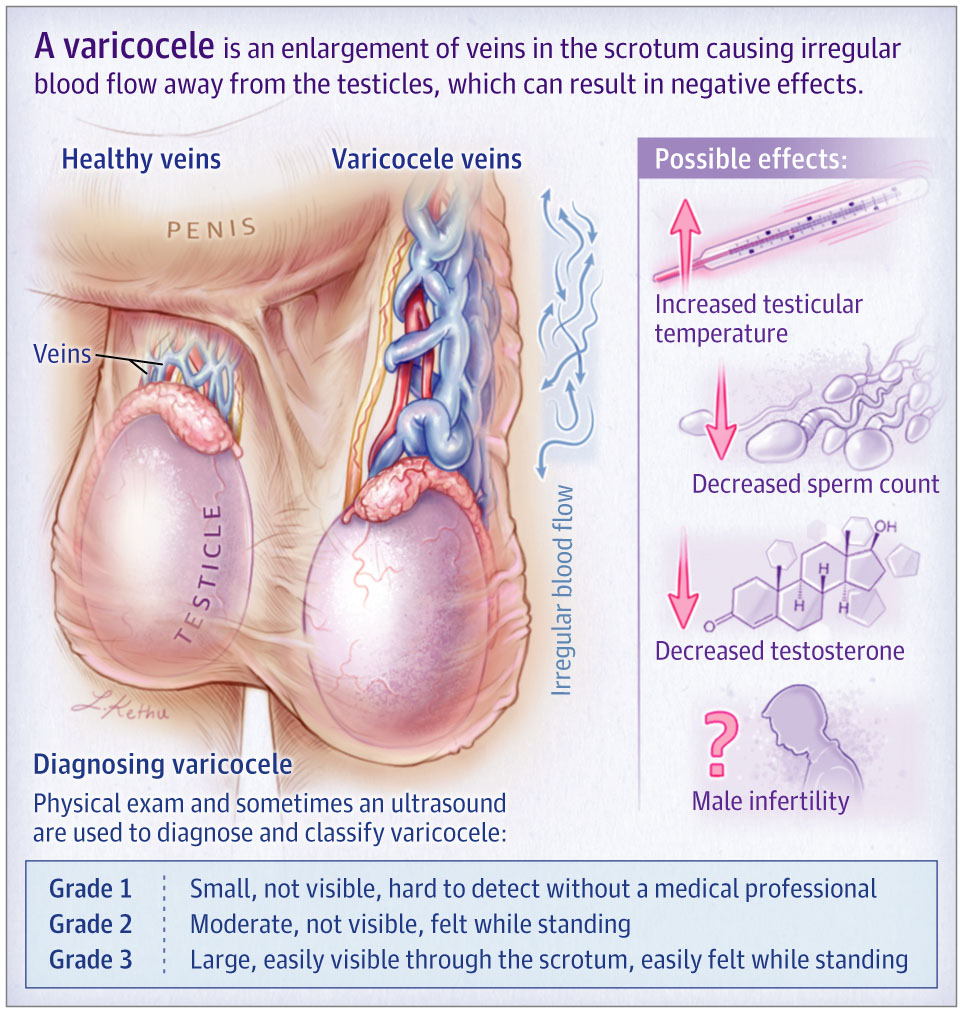
What are the different grades of varicocele?
Clinical varicoceles are detected and graded based on physical examination. The following table shows us the different grades of varicocele.
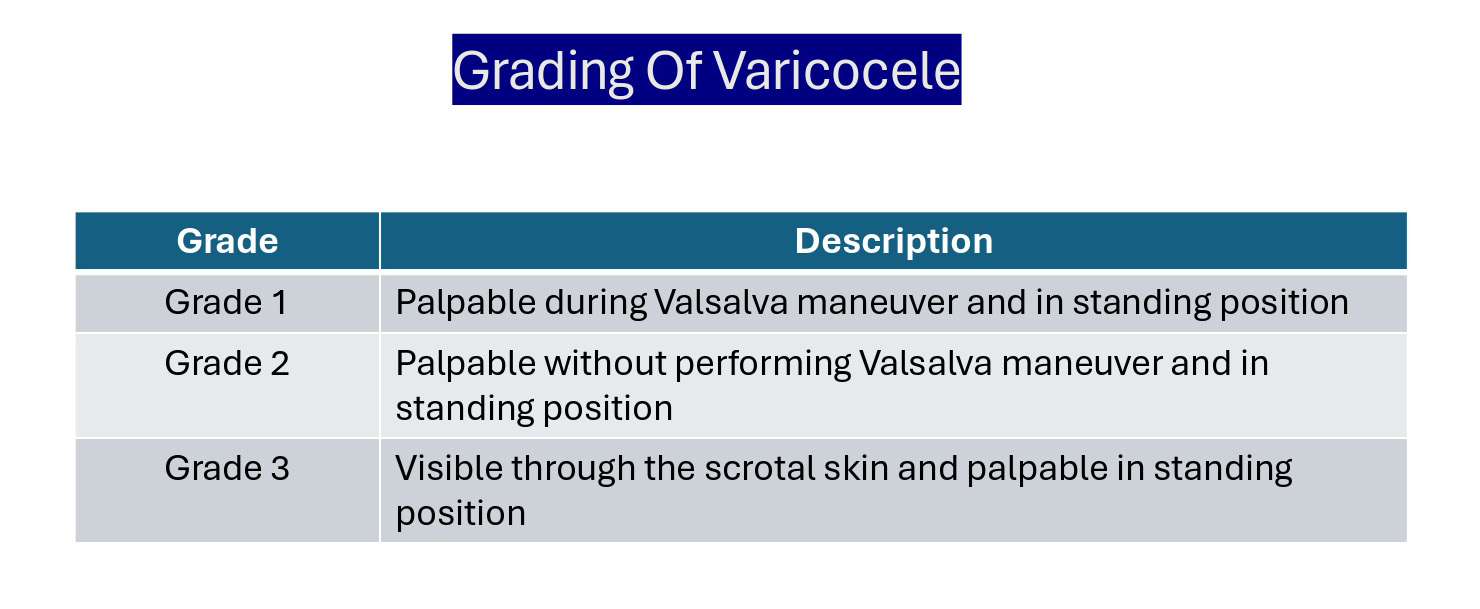
What tests are needed?
Varicoceles are mainly diagnosed on clinical examination. Various imaging modalities are available to improve detection rates and provide further anatomic detail of varicoceles.
- Ultrasonography: colour doppler ultrasound-based classification of the varicoceles are given below.
- CT: The role of CT in the evaluation of varicoceles has mainly been limited to investigating retroperitoneal pathology. Causes of varicocele formation that could be found on CT imaging include renal tumours, retroperitoneal tumours causing compression, vena caval thrombi and retro aortic renal veins.
- MRI: The effects of varicocele on fertility can be potentially quantified using MRI. Early changes within the tissue parenchyma can be detected early by using diffusion weighted imaging (DWI)
- Venography: It is a useful adjunct to guide intraoperative decision making and has also been used in cases where varicocele recurs for planning of definitive treatment
- Thermography: It used to find areas of hyperthermia for subclinical varicocele. It measures the temperature and surface of scrotal skin and uses a film with a heat-sensitive liquid crystals.
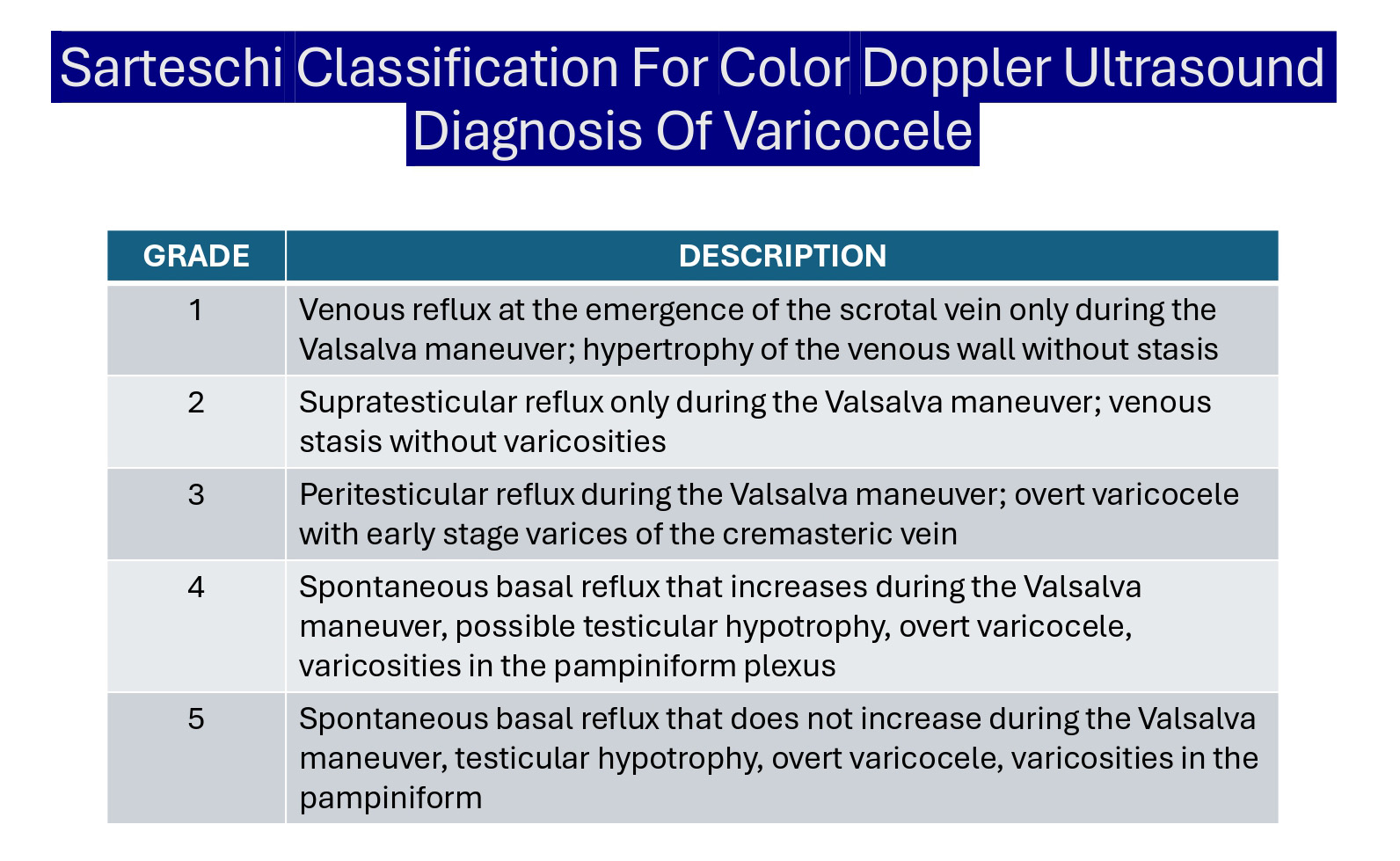
How to treat Varicocele?
Varicocele repair has been shown to improve both semen parameters and testosterone production in hypogonadal males with subfertility. There are various techniques of varicocele repair. However, microscopic varicocele repair is currently considered as the gold standard for varicocele repair.
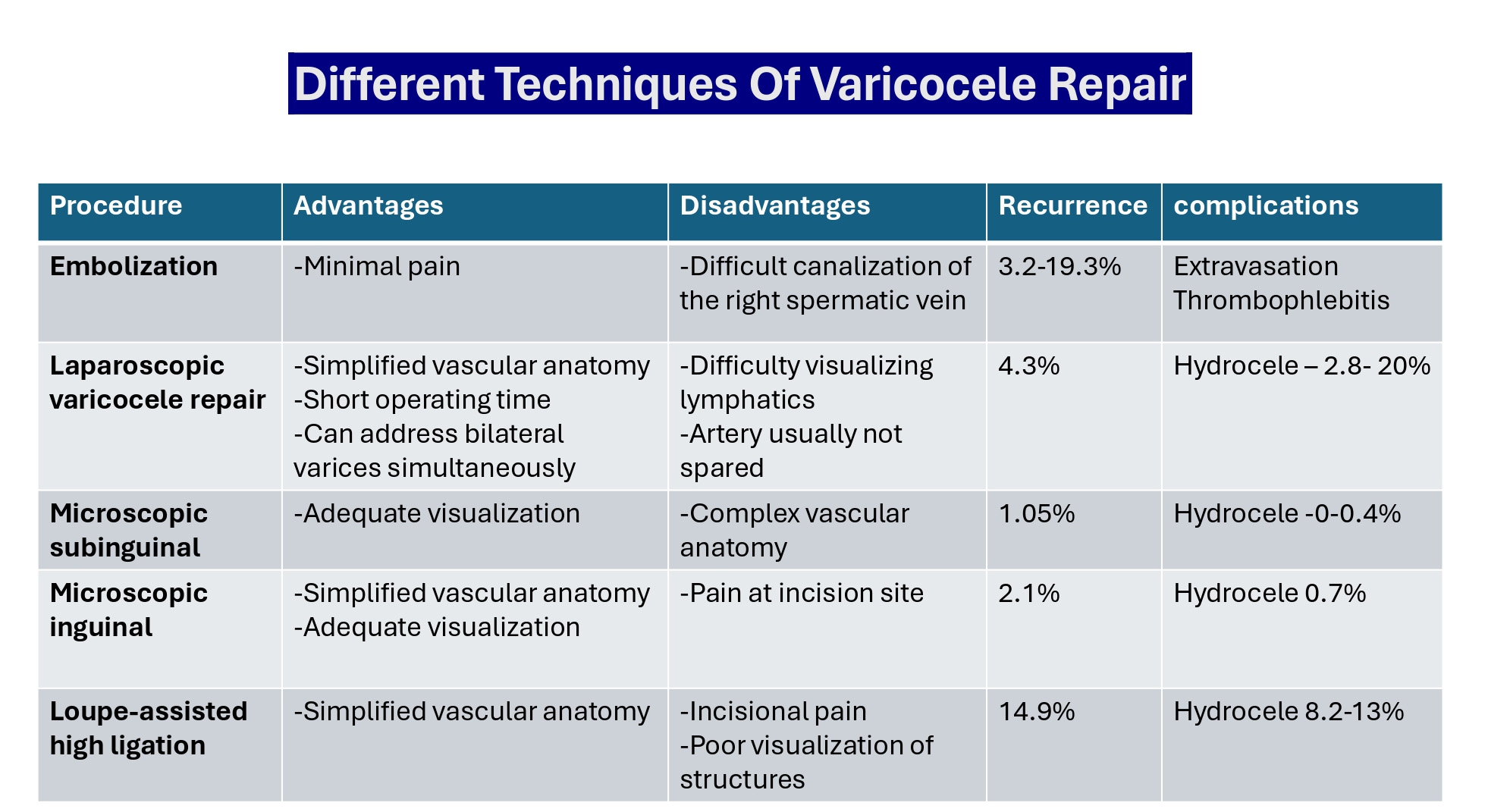
Conclusion
Varicocele is one of the important causes of male infertility. Prompt diagnosis and correction of the condition leads to improved fertility results. Microscopic varicocelectomy is the gold standard in varicocele repair.
Male infertility constitutes to a considerable proportion of infertility. Enrol into our Fellowship in Reproductive Medicine at Medline Academics to deepen your knowledge on all aspects of male infertility such various causes, treatment options, recent advances, ethical and legal issues.
